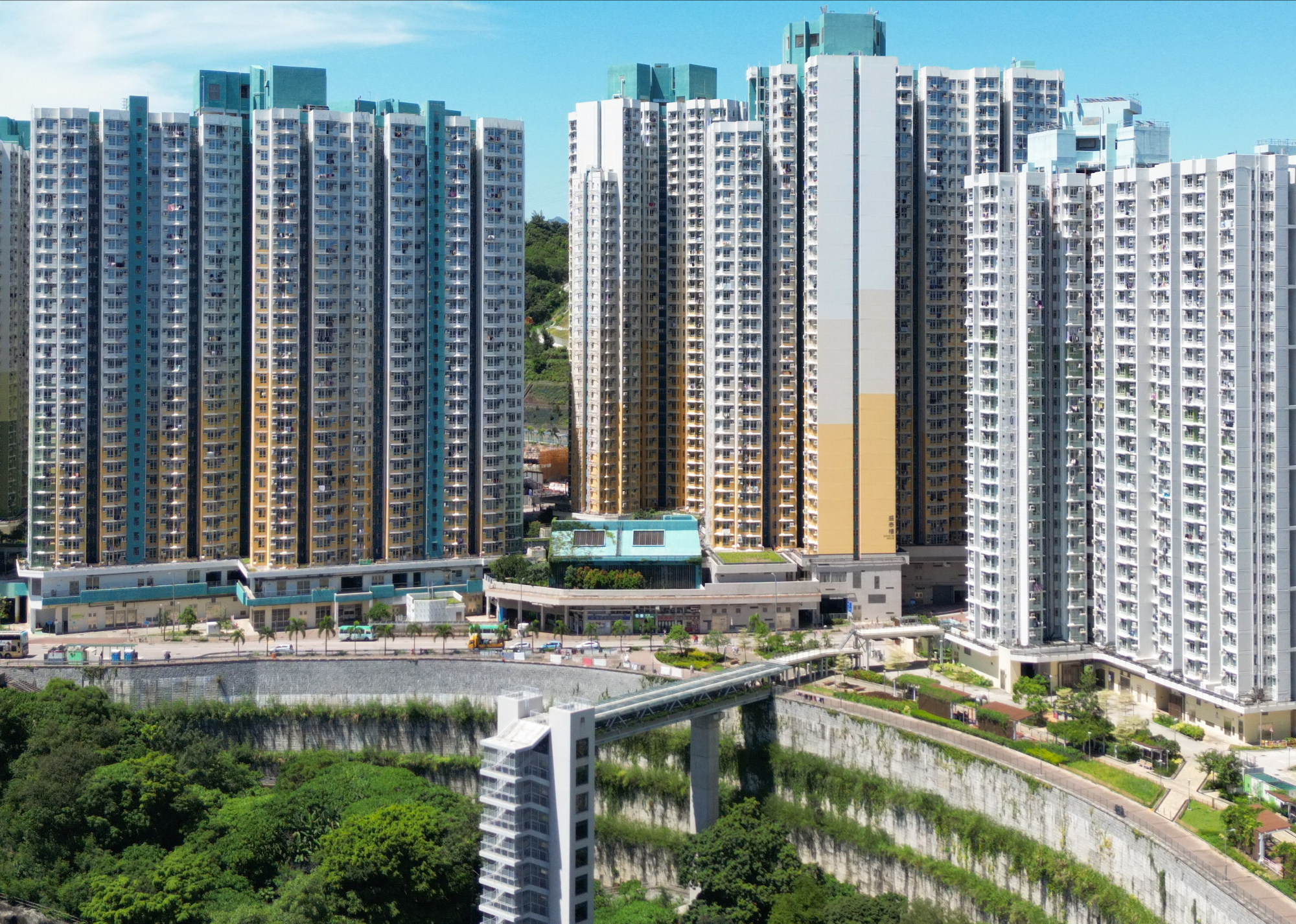
Hong Kong authorities urged to focus on quality over quantity of public housing flats
- Our Hong Kong Foundation think tank expects government will meet public housing supply goal as an average of 35,000 flats set to be completed annually over next five years
- ‘We can see that we are entering a ‘harvest phase’ in land supply in the next few years, hence the prospects of [housing] supply will continue to improve,’ think tank’s vice-president says
Authorities should provide quality homes rather than just roll out more flats, a leading Hong Kong think tank said on Thursday, as it predicted the government would meet its public housing supply target in a few years.
In a study, Our Hong Kong Foundation forecast that an average of 35,000 flats, including light public housing, were set to be completed annually over the next five years. This would exceed the government’s target of 30,800 flats per year.
“We can see that we are entering a “harvest phase” in land supply in the next few years, hence the prospects of [housing] supply will continue to improve,” Ryan Ip Man-ki, the foundation’s vice-president and co-head of research, said.
In the Hong Kong Housing Landscape Navigator study, the think tank estimated that the city’s housing supply in both public and private sectors would increase in the next few years.
For public housing flats, the think tank said that the government would be able to roll out an average of 29,000 traditional rental and subsidised home ownership properties for tenants annually in the next five years. The figure excludes light housing, government-built temporary homes that aim to serve families on the waiting list for a public flat for three or more years.
The number of public housing flats to be completed is expected to continue to rise in the subsequent five-year period, with the think tank projecting an average of 39,800 per year under conditions of three-year land handover delays and 15 per cent of projects subject to construction delays.

Meanwhile, the average waiting time for public housing could also drop to as low as 4.6 years in 2026-27 from the current 5.8 years, if all projects were completed on time.
However, Jason Leung Yeuk-ho, head of land and housing research at the think tank, warned that the waiting time could rise to 5.2 years if 15 per cent of all projects, including light public housing, saw delays.
“This 15 per cent was based on the average percentage of delayed public housing completions over the past decade,” he said.
For private housing, the think tank estimated that an average of 19,100 homes would be completed each year in the next five years, which would be higher than the average of 16,800 flats per year between 2019 to 2023.
“The reason for more flat completions in these two years is because many projects had been affected by adverse market conditions or even extreme weather last year, causing construction delays,” Ip said.
With an optimistic outlook on the city’s housing supply, Leung suggested the government shift its policy to focus on improving the quality of public flats and boosting the supply of subsidised sale properties to foster social mobility.
Hong Kong housing director rejects concerns over slow subsidised homes market
To increase home ownership in the city, Leung called on the government to roll out more flats under the Green Form Subsidised Home Ownership Scheme, which targets current public housing tenants.
“Every time sales open for [subsidised sale flat schemes], they are oversubscribed. At its peak, the oversubscription rate could even reach 62.6 times,” Leung said.
“These statistics tell us that we need to provide more affordable sale flats to improve the housing ladder and foster the upwards trend.”
But Ip added that authorities should evaluate the prices of their subsidised sale flats. He noted that private market prices were easing towards the government’s subsidised ones.
“One of the problems is that [authorities’] pricing has been rather inflexible when compared with the private market. In particular, it takes around six months between [when] the pricing is set and when the units are sold. A lot can happen in six months,” Ip said.
He suggested authorities lower the prices of their subsidised flats or shorten the time frame between setting the price and sale.

